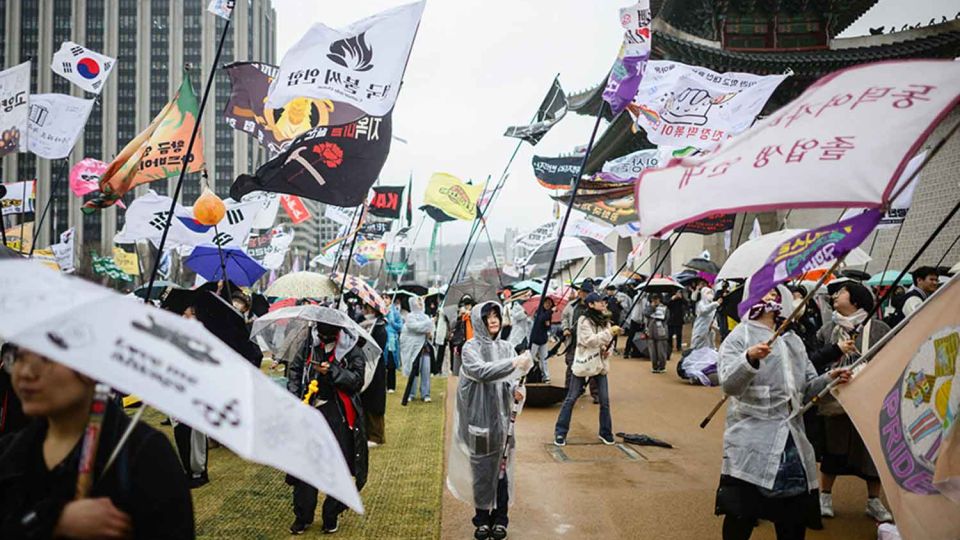April 29, 2025
SEOUL – In a stark reminder of its mounting vulnerabilities, South Korea’s economy shrank in the first quarter of 2025, signaling a potential slide into long-term stagnation.
Preliminary data from the Bank of Korea shows that real gross domestic product shrank by 0.2 percent from the previous quarter, missing the central bank’s forecast of 0.2 percent growth. On an on-year basis, the economy slipped 0.1 percent — its first annual decline since the Asian financial crisis more than two decades ago.
The contraction reflects a convergence of troubling forces. Domestically, the political chaos triggered by former President Yoon Suk Yeol’s declaration of martial law and subsequent impeachment severely dampened consumer and business confidence. Private consumption dropped by 0.1 percent, mirroring declining sentiment.
Construction investment plunged 3.2 percent, while facility investment fell 2.1 percent, highlighting businesses’ reluctance to expand amid uncertainty. Exports — long the bedrock of South Korea’s economic growth — declined 1.1 percent, dragged down by slumping shipments of chemicals, machinery and equipment.
The downturn is more than a blip. Since a brief rebound in early 2024, when the economy grew 1.3 percent, South Korea has recorded near-zero or negative growth for four consecutive quarters. This marks the first time since the Bank of Korea began compiling GDP data in 1960 that growth has hovered below 0.1 percent for an entire year. Even during the 1997 crisis and the 2008 global meltdown, recovery came faster.
External factors are compounding the malaise. The aggressive tariff policy of President Donald Trump’s administration in the US, including a 25 percent levy targeting South Korean goods, looms large. Although implementation has been paused for 90 days, tariffs on automobiles, steel and aluminum remain in force, weighing heavily on Korea’s export-driven economy. Alarmingly, the International Monetary Fund downgraded Korea’s 2025 growth forecast from 2 percent to 1 percent last week, citing its susceptibility to global trade disruptions.
Yet more troubling than short-term shocks are the deeper structural cracks. South Korea faces a shrinking working-age population, stagnant productivity and rigid labor markets. Without reform, the nation’s nominal GDP could slip from 12th to 15th in the global rankings by 2030 — a sobering reversal for a country once heralded as a model of rapid ascent. The danger is clear: South Korea risks sinking into a slow, grinding decline reminiscent of Japan’s “lost decades.”
The immediate priority must be stabilization efforts. The National Assembly should pass the government’s proposed supplementary budget of 12 trillion won ($8.35 billion). The package includes funds for disaster response, support for trade and artificial intelligence sectors, and measures to stabilize living costs. Yet political infighting has stalled progress even as the economy deteriorates. Each day of delay risks further erosion of public confidence.
Swift passage of fiscal stimulus, coupled with active engagement with Washington to craft a “package” agreement on tariffs by July 8, could cushion South Korea against external shocks. If necessary, policymakers should prepare a second round of stimulus measures later this year.
In the longer term, South Korea needs to reengineer its growth model.
Cutting regulatory red tape, nurturing industries beyond semiconductors and autos, reforming labor practices and opening up to foreign talent are essential steps. Presidential candidates must resist the temptation of short-term populism and focus instead on building sustainable competitiveness. Economic revival will require resisting politically expedient but economically harmful legislation that could further strangle corporate activity.
South Korea’s current troubles are not merely the product of external shocks. They are the price of deferred reforms, growing complacency and deepening structural fatigue. Reversing the slide will demand a mix of urgency, bipartisan cooperation and policies to enhance competitiveness. Without timely and coordinated efforts, the latest economic contraction may be only a harbinger of bigger troubles ahead.


